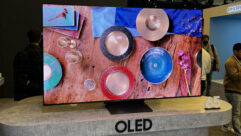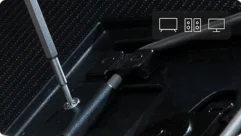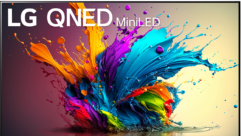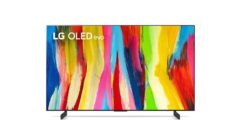
Sony expands LCD and OLED TVs, adds DMex extenders
Jun 12, 2008 12:00 PM,
By Rebecca Day

Sony continues to redefine the television in the digital age. The company has added to its line of Digital Media Extender (DMex) products while disclosing plans to expand distribution of its OLED TV to Internet channels. The company also has unveiled its new line of XBR TVs due later this year, including its largest LCD TV to date.
The 70in. KDL-70XBR7 LCD TV represents an 18in. jump in screen size for Sony, whose largest flatpanel TV to date has been a 52in. model. Prices weren’t disclosed for any of the seven new Sony TVs, which are due to start shipping this fall. The 70XBR7 is part of the 7 Series from Sony, which also includes a 40in. model.
Both Series 7 1080p TVs incorporate Sony’s Motionflow 120Hz high frame rate technology and x.v.Color compatibility. The latter expands the potential color data range of video by about 1.8 times, and is said to result in more natural and vivid colors similar to what the human eye can actually see. Although broadcast programming can’t currently realize the potential of x.v. Color, sources including HD camcorders and Blu-ray Disc players can, Sony says. Inputs for the Series 7 TVs include four 1080/60 24p HDMI connections (HDCP), two 1080/60p component inputs, a 1080/60p PC input, Ethernet (RJ-45) port and a RS-232C connection.
Sony’s top line, the Series 8, includes two models in 55in. and 46in. screen sizes. The TVs incorporate LED backlighting along with local dimming. The LED backlight boasts an expanded color range utilizing individual clusters of red, green, and blue LEDs rather than single white LED bulbs. The sets’ Advanced Contrast Enhancer includes Sony’s algorithm for local dimming that’s designed to boost black levels and dynamic range while consuming less power. The technology is said to minimize unnecessary light emission resulting in deep blacks and reduced power consumption compared to conventional LED backlit models.
XBR8 inputs include four 1080/60 24p HDMI connections (HDCP), two 1080/60p HD component inputs, a 1080/60p-capable PC input, Ethernet (RJ-45) port and a RS-232C connection.
The Series 6 TVs include 32in. and 37in. models. The sets incorporate bottom speakers instead of the side-firing speakers found on the higher end models and have no RS-232C connections.
All of the new XBR TVs offer optional color grilles.
Sony’s new Bravia TVs are compatible with the company’s DMex extenders, which enable consumers to add functionality without purchasing a new TV. The first extender on the market was the Bravia Video Link, which connects users to the Internet to bring online content to the TV. The company announced at CES that it had added CBS content to its palette of offerings and this month it has partnered with YouTube for the full YouTube gallery of videos, although videos through the Sony interface are limited to 10 minutes in length. Users can access to their YouTube accounts, including favorites, but they can’t comment on videos. Search functions are executed by remote control using a keypad-type interface.
Later this year, Sony will ship additional DMex modules including a standard DVD player that slips into a slot on a Bravia TV, an HDMI expansion module that gives users four additional HDMI slots, plus a wireless module. The latter allows installers to mount video-source equipment elsewhere in a room while delivering full HD video wirelessly to a TV mounted on a stand or a wall up to 65ft. away.
Looking to OLED, Sony has begun Internet sales of the 11in. XEL-1 through SonyStyle.com and Crutchfield. For now, the 11in. product is all that’s in the works, although the company has showed a 27in. prototype. Over the next 60 days, the company will expand distribution for the XEL-1 from 70 dealers now to roughly 100 dealers representing 150 outlets, according to Randy Waynick, Sony Home Products senior vice president of marketing. Waynick says sell-through of the XEL-1 has increased weekly on a per-store basis, with CEOs and high-end early adopters the prime buyers. Professional photographers have shown interest in the product as a desk-size showcase for their work as well, he said.
“OLED represents the future,” Waynick said, “and it will continue to expand. But we have no announcements on when or how big future models will be.” The OLED TV is one of the limited-availability products the company is using in its Sony Unified Resale Execution (SURE) program that rolled out at the first of the month. The program is designed to preserve margins for high-end products in the competitive market.










